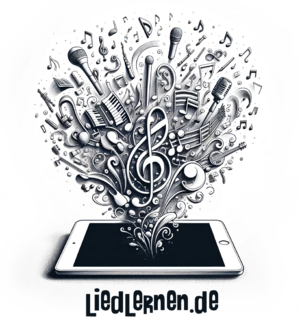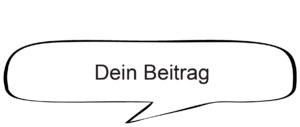

Fairy Tales
Fairy Tales
Fairy tales are a type of traditional story that typically features folklore characters such as fairies, goblins, elves, trolls, witches, giants, and talking animals. They often involve enchantments and far-fetched events. Let's dive into the magical world of fairy tales and explore their history, elements, and significance.
History and Origins
Fairy tales have been a part of human storytelling culture for centuries. Their origins can be traced back to the oral traditions of various cultures. The term "fairy tale" itself originated in 17th-century France as "conte de fées." Over time, these stories were written down and popularized by authors such as Charles Perrault, Brothers Grimm, and Hans Christian Andersen.
- Oral Tradition: Explore the transformation from oral tradition to written stories.
- Perrault's Influence: Discover how Charles Perrault contributed to fairy tale literature.
- Grimm's Fairy Tales: Learn about the Brothers Grimm and their collection of tales.
- Hans Christian Andersen: Investigate Andersen's unique fairy tales and storytelling style.
Elements of Fairy Tales
Fairy tales are known for certain key elements that define this genre:
- Magic and Enchantment: Magic is a central element, often driving the plot or assisting characters.
- Good vs. Evil: The theme of good versus evil is prevalent, with characters clearly defined as heroes or villains.
- Moral Lessons: Many fairy tales include a moral lesson or message.
- Fantastical Creatures: Characters often include fantastical creatures and talking animals.
- Happy Endings: Most fairy tales end with a positive resolution, often "happily ever after."
Significance and Impact
Fairy tales play a significant role in culture and society. They offer a window into the values, fears, and hopes of different cultures and times. They also serve as a source of inspiration for various forms of art and media.
- Cultural Insights: Understand the cultural and historical contexts of different fairy tales.
- Fairy Tales in Modern Media: Explore how fairy tales influence films, books, and art today.
- Psychological Interpretations: Investigate the psychological interpretations and theories behind fairy tales.
Interactive Tasks
Quiz: Test Your Knowledge
What is a key characteristic of fairy tales? (Magic and Enchantment) (!Realistic Settings) (!Scientific Explanations) (!Historical Accuracy)
Who was one of the early collectors of fairy tales? (Charles Perrault) (!William Shakespeare) (!Jane Austen) (!Mark Twain)
Fairy tales often end how? (Happily Ever After) (!With a Cliffhanger) (!In Ambiguity) (!With a Tragic Twist)
Which is not a common theme in fairy tales? (Advanced Technology) (!Good vs. Evil) (!Moral Lessons) (!Fantastical Creatures)
Hans Christian Andersen is known for? (Unique Fairy Tales) (!Inventing the Printing Press) (!Writing Historical Novels) (!Discovering New Lands)
Fairy tales were originally passed down through? (Oral Tradition) (!Television Broadcasts) (!Social Media) (!Academic Textbooks)
Which of these is not typically found in fairy tales? (Realistic Physics) (!Talking Animals) (!Magical Elements) (!Moral Lessons)
The Brothers Grimm are famous for? (Collecting Fairy Tales) (!Inventing the Telephone) (!Discovering Electricity) (!Writing Science Fiction)
A common element in fairy tales is? (Fantastical Creatures) (!Modern Technology) (!Scientific Accuracy) (!Urban Settings)
Fairy tales often include? (Moral Lessons) (!Complex Political Plots) (!Detailed Historical Contexts) (!Advanced Mathematics)
Memory
| Magic | Enchantment |
| Grimm | Collectors |
| Andersen | Unique Tales |
| Moral Lessons | Educational Value |
| Oral Tradition | Original Transmission |
Crossword Puzzle
| Enchantment | What is a common element involving magic in fairy tales? |
| Perrault | Who was an early collector and author of fairy tales? |
| Evil | What opposing force is often found in fairy tales against good? |
| Creatures | What term describes fantastical beings in fairy tales? |
| Happyend | How do most fairy tales conclude? |
| Morals | What are often taught through the stories of fairy tales? |
| Fairy | What type of tale features magical and fantastical elements? |
| Oral | How were fairy tales originally passed down? |
Cloze text
<quiz display=simple> {Complete the text. |type="{}"} Fairy tales often start with "{ Once upon a time }" and feature { magical } elements. They teach { moral } lessons and usually end with "{ happily ever after }". </quiz>
Open Tasks
Easy
- Draw a Fairy Tale Scene: Create an artistic interpretation of your favorite fairy tale scene.
- Fairy Tale Family Tree: Construct a family tree of characters from a well-known fairy tale.
Standard
- Write Your Fairy Tale: Craft your own fairy tale, incorporating traditional elements.
- Fairy Tale Analysis: Analyze the moral lesson of a popular fairy tale and how it applies to modern life.
Difficult
- Fairy Tale Adaptation: Adapt a fairy tale into a short play or script for a modern audience.
- Research on Oral Traditions: Conduct a research project on how fairy tales were preserved and passed down in oral traditions.
Oral Exam
- Compare and Contrast: Discuss the differences and similarities between two famous fairy tales.
- Cultural Impact: Explain the impact of fairy tales on modern literature and media.
- Character Analysis: Analyze the character development of a protagonist in a famous fairy tale.
- Themes and Motifs: Discuss common themes and motifs found across various fairy tales.
- Historical Context: Explain how the historical context of a fairy tale's creation influenced its content and themes.
OERs on the Topic
Links
Share - Discuss - Rate

MUSIC QUIZ










|
|



